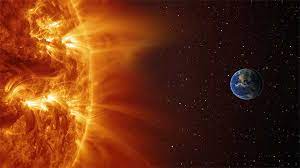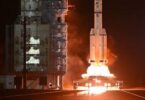Monitoring Desk
NEW DELHI: After “conquering” the Moon, India is launching its solar mission Aditya-L1, announced Indian Space Research Organisation (ISRO) on Tuesday.
According to an ISRO statement, “the first solar mission, Aditya-L1, will be launched on September 2 at 11:50 am from the Sriharikota space centre.”
It added: “Aditya-L1 will observe the solar corona from a remote location at the Sun-Earth Lagrange point L1, which is about 1.5 million kilometres from Earth.”
Named after Joseph-Louis Lagrange, a French mathematician who first studied them in the 18th century, Lagrange Points are points in space where the gravitational forces of two large bodies, such as the Sun and the Earth, balance out, creating a region of equilibrium that can be used by a spacecraft to reduce fuel consumption.
“A satellite placed in the halo orbit around the L1 point has the major advantage of continuously viewing the Sun without any occultation/eclipses. This will provide a greater advantage of observing solar activities and their effect on space weather in real-time,” says ISRO.
India’s first space-based observatory to study the Sun, the Aditya-L1 spacecraft, will be launched using the PSLV-C57 rocket.
Main Objectives
According to ISRO, The Aditya-L1 mission is designed to study the Sun’s upper atmosphere (chromosphere and corona) and its interaction with the solar wind. The mission is aimed at studying the physics of the partially ionized plasma in the solar atmosphere.
The spacecraft will investigate the mechanisms that heat the solar corona and observe the initiation and development of coronal mass ejections (CMEs) and solar flares.
It will study the in-situ particle and plasma environment in the vicinity of the Sun and characterise the magnetic field in the solar corona.
It will also study and evaluate the main drivers of space weather.
Payloads
The Aditya-L1 spacecraft will be equipped with seven payloads to study the Sun’s corona, chromosphere, photosphere, and solar wind.
“The suits of Aditya L1 payloads are expected to provide the most crucial information to understand the problem of coronal heating, coronal mass ejection, pre-flare and flare activities and their characteristics, dynamics of space weather, propagation of particle and fields, etc.,” says ISRO.
The four remote sensing payloads will image the Sun’s atmosphere in different wavelengths of light, including visible, ultraviolet, and X-rays.
The Visible Emission Line Coronagraph (VELC) will image the solar corona and study its dynamics.
The Solar Ultraviolet Imaging Telescope (SUIT) will image the photosphere and chromosphere in both narrow and broadband ultraviolet wavelengths.
The Solar Low Energy X-ray Spectrometer (SoLEXS) will study the soft X-ray emission from the Sun.
The High Energy L1 Orbiting X-ray Spectrometer (HEL1OS) will study the hard X-ray emission from the Sun.
The three in-situ payloads will measure the composition, dynamics, and magnetic field of the solar wind.
The Aditya Solar Wind Particle Experiment (ASPEX) will measure the composition and dynamics of the solar wind.
The Plasma Analyser Package For Aditya (PAPA) will measure the plasma properties of the solar wind.
The Advanced Tri-axial High-Resolution Digital Magnetometers will measure the magnetic field in the solar wind.







